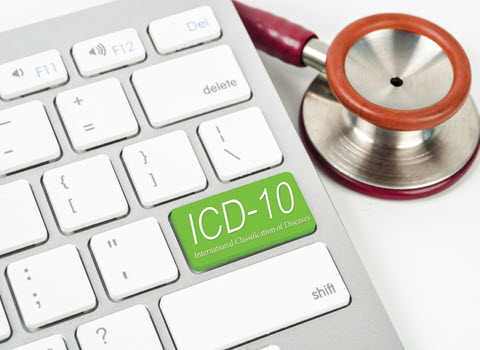Review These New SDoH Code Updates Available Oct. 1
Plus: Understand noncompliance code revisions, too. Among the recently released ICD-10-CM 2023 codes, are myriad new codes and revisions that encourage health equity and offer new options for reporting social issues. Context: Starting Oct. 1, 2022, you’ll have an expanded list of social determinants of health (SDoH) codes, as well as new ways to report patient and caregiver noncompliance. These factors have always played an important role in patient wellbeing, and soon there will be a way to document them in greater detail. SDoH codes “have particular pertinence to underserved and disadvantaged populations, whether reflecting issues of access, finances, education, and caregiver capacity,” notes Glenn D. Littenberg, MD, MACP, FASGE, AGAF, a gastroenterologist and former CPT® Editorial Panel member in Pasadena, California. Here’s a comprehensive breakdown of the new codes and revised guidelines, as well as our experts’ take on what it all means. Get Ready for Z59.8- Code Expansion The first significant revision of note is the expansion to the Z59.8- (Other problems related to housing and economic circumstances) code set, which will allow you to capture ways in which a patient’s health is affected by their social circumstances in much greater detail. This expansion “now allows for further specificity when coding for other problems related to housing and economic circumstances,” notes Amy Pritchett, CCS, CPC-I, CPMA, CDEO, CASCC, CANPC, CRC, CDEC, CMPM, C-AHI, senior consultant at Pinnacle Enterprise Risk Consulting Services LLC, Centennial, Colorado. “Prior to the expansion of Z59.8, everything rolled into the ‘other’ code. But the addition of a 5th digit (2, 6, 7) allows you to document transportation insecurity, financial insecurity, and material hardship,” Pritchett adds. The three new codes and their inclusion terms are: Additionally: “ICD-10 2023 contains a new Excludes2 note stating you can code extreme poverty [Z59.5], low income [Z59.6], or material hardship NEC [Z59.87] with Z59.86 and Z59.87,” Pritchett observes. Don’t Miss the Relevant Guidelines Changes ICD-10 2023 has also expanded guideline I.C.21.c.17 to help you use the codes effectively. The new verbiage clarifies that the purpose of reporting SDoH codes is to identify and report the “problems or risk factors” related to SDoH, using the example of Z60.2 (Problems related to living alone). The expanded guidelines explain that “not every individual living alone would be assigned code Z60.2.” The documentation must specifically show that the patient has a health problem or risk factor associated with that SDoH. Additionally, ICD-10 guideline IV.J states that you should “code all documented conditions that coexist at the time of the encounter/visit and that require or affect patient care treatment or management.” Similarly, the 2021 revisions to the office/ outpatient evaluation and management guidelines include SDoH as a moderate risk level of medical decision making (MDM), but only when it’s clear that SDoH has a significantly limiting impact on the treatment. In fact, this element of MDM could translate into financial incentive for some practices. In many managed care systems, providers and payers have payment contracts based on risk assessment data related to SDoH. “Generally, individuals who carry one or more of a range of high-risk diagnoses have higher capitation paid on their behalf, so managed care plans are motivated to have providers report these diagnoses,” says Littenberg. Comply With These New Patient and Caregiver Noncompliance Codes ICD-10 2023 also expands the patient noncompliance codes. You’ll now be able to report various reasons for a patient’s inability or unwillingness to follow medical treatment with the following new codes: Something of particular interest in regard to the care of pediatric and elderly patients is the addition of another “new category of codes that allow for the assignment of caregiver non-compliance and reasons for such compliance,” which you could only document previously with a code for “other noncompliance,” according to Pritchett. Under this new category, Z91.A- (Caregiver’s noncompliance with patient’s medical treatment and regimen), you’ll find several analogous codes to the patient noncompliance codes, including Z91.A10 (Caregiver’s noncompliance with patient’s dietary regimen due to financial hardship) and Z91. A9 (Caregiver’s noncompliance with patient’s other medical treatment and regimen). But Z91.A- also adds significant new codes that provide greater specificity for caregiver noncompliance, such as: Coding alert: “Per ICD-10-CM guideline I.B.14, other clinicians such as nursing staff may document SDoH, and this information can be captured by the coder. With more SDoH codes being implemented, coders need to be mindful of nursing documentation in an effort to capture these important codes,” says Chelsea Kemp, RHIT, CCS, COC, CDEO, CPMA, CRC, CCC, CEDC, CGIC, AAPC Approved Instructor, outpatient coding educator/auditor for Yale New Haven Health, New Haven, Connecticut. Don’t Overlook This New Underdosing Guideline ICD-10 2023 also contains an addition to the wording of underdosing guideline I.C.19.e.5.(c), which will affect the way you assign both new codes Z91.A28 and Z91.A3, along with the other underdosing codes currently found throughout ICD-10. The new wording states that “documentation of a change in the patient’s condition is not required in order to assign an underdosing code. Documentation that the patient is taking less of a medication than is prescribed or discontinued the prescribed medication is sufficient for code assignment.” So, the medical record simply needs to show the patient is not taking the prescribed dose of a medication, not that underdosing is adversely affecting the patient’s condition. Under such circumstances, you can then go ahead and code T36-T50 for the underdosing, along with the appropriate noncompliance (Z91.12-, Z91.13-, and Z91.14-) or complication of care (Y63.6- Y63.9) code(s) per the updated guideline. Remember: Also, per the existing guideline, you should not assign an underdosing code as a principal or first-listed code “if a patient has a relapse or exacerbation of the medical condition for which the drug is prescribed because of the reduction in dose.” In such cases, the guideline instructs you to code the patient’s medical condition as the first-listed code.





